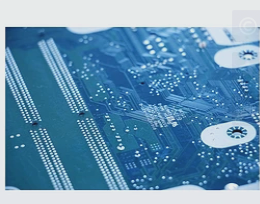Flat Cable: The Ultimate Guide to Flexible Circuit Boards (FPC)
- Flat cable, also known as a flexible circuit board (FPC), is crucial for data transmission in dynamic components and active regions, adhering to industry specifications such as wiring rules, line sequence, line color, and line number.
- Data cables and interconnecting cables between devices are collectively referred to as flat cables. They are primarily categorized into two types: round connectors at both ends (R-FFC for direct soldering) and flat connectors at both ends (FFC for insertion into sockets).
- Flat cables are ideal for data transmission between moving parts, motherboards, and compact electronic devices. The cost of FFC cables is more favorable compared to FPC, leading to an expected significant increase in usage.
- FFC cables can serve as an effective alternative to FPC in various applications, offering enhanced assembly reliability and quality while reducing the hardware required for internal connections.
Latest Updates in Flexible Circuit Boards:
- Enhanced assembly reliability and quality are key features of cables commonly used in traditional electronic packaging, such as solder joints, relay lines, and backplane lines.
- Ping Wu, marketing manager of EECX Electronic Products Division, highlighted the low rigidity and compact size of flex cables, requiring less material due to the small dimensions of flex board components.
- Advancements in quality engineering have led to the design of very thin flexible systems that minimize human errors associated with independent wiring projects.
- The minimum line width and spacing are 3 mil/3 mil, with the smallest finished wire hole diameter reaching 0.15 mm.
- Various reinforcement materials like FR4, PI, and steel sheet reinforcements ensure high temperature resistance during welding or bonding processes for FPC flexible circuit boards.
- FPC cable bending tests are essential to ensure proper functionality, with pluggable pins at both ends for direct connector connections or product welding.
Key Points on Flexible Printed Boards:
- The base material of flexible printed boards is typically rolled copper, providing flexibility and resistance to bending.
- Reinforcement boards, available in different shapes and materials, play a crucial role in maintaining dimensional accuracy and structural integrity.
- Adhesives in film form are used for lamination, with CNC techniques employed for rigid boards and shaping of polyester and polyamide films.
- Simplified designs and user-friendly jigs can enhance production efficiency and reduce costs, aligning with the trends of high density and miniaturization in electronic products.
Applications and Advantages of FPCs:
- FPCs have gained widespread application in aerospace, military, mobile communications, laptops, digital cameras, and more, offering significant reductions in volume and weight of electronic products.
- They can be arranged according to spatial layout requirements, enabling movement and expansion in three-dimensional space to facilitate component assembly and wire connections.




